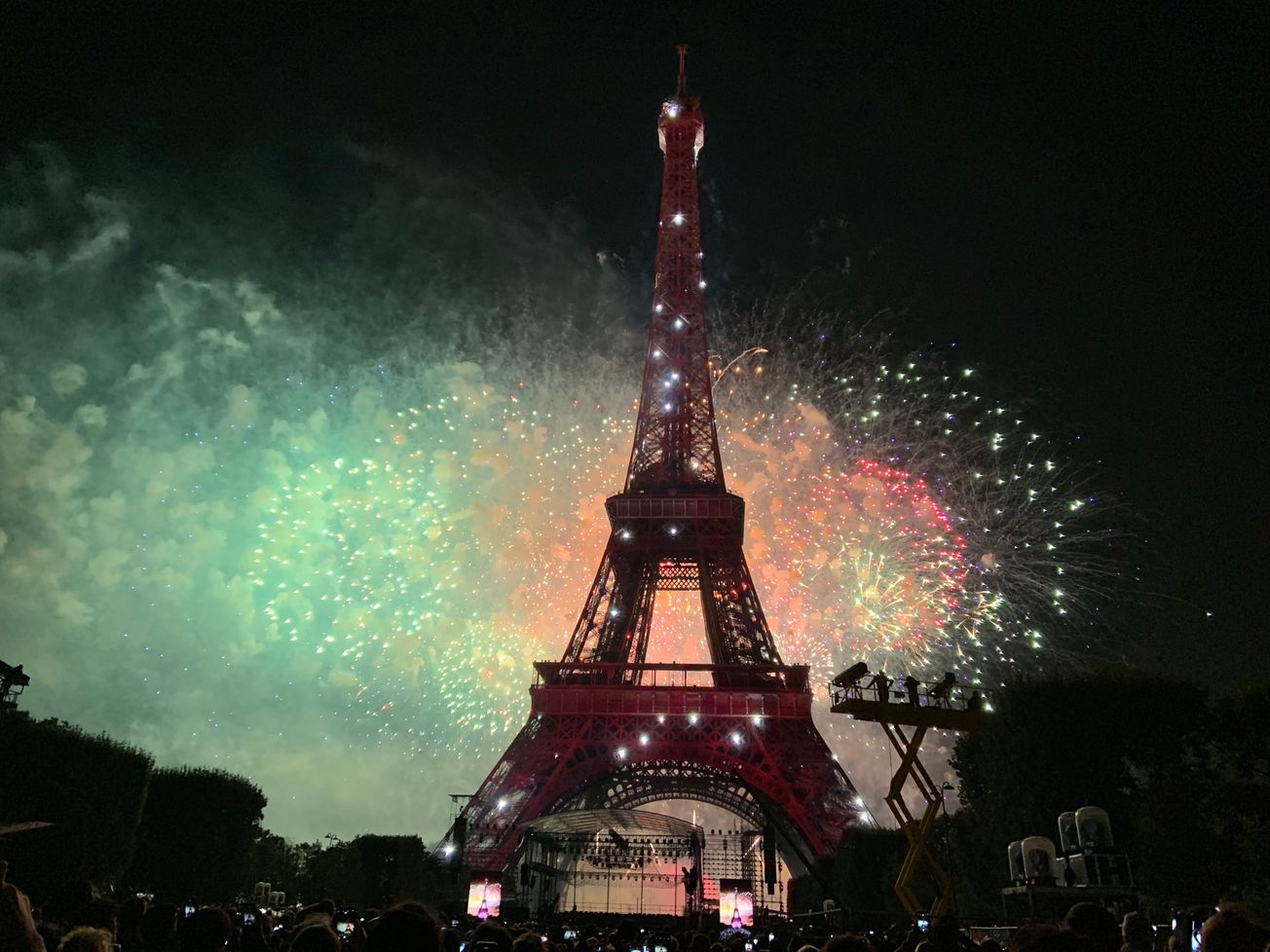By Oliver Briscoe, Third Year, Law
Oliver Briscoe writes about a recent visit to Paris with his family in the format of a personal diary. Here is the second installment Oliver reflects on his visit to the French capital.
Mercredi le 18 decembre 2019:
Another idle morning of breakfasting, lounging and waiting for others to rise and shine, our grandparents took us our to see the Charlotte Perriand exhibit at Gehry’s fish-out-of-water Fondation Vuitton, an ingenious glass and metal origami reaching over the Bois de Boulogne.
Perriand’s life spanned from 1903 to 1993 and her early XXth and mid-century modernism streaked throughout it all, from Art Deco to a sleeker integration of industry and machinery into the everyday, into the home. Her creativity seeped into the moulds of many mediums; architecture, furniture and interior design, to collaborative collages. The cornerstones of her style are best seen in her work with Le Corbusier’s team, the ‘Grand Comfort’, the ‘Dossier Basculant’ and the ‘Fauteuil Pivotant’. This exhibit, in part a rehabilitation and a revelation, stops short of making a gendered comment— it is standard in design partnerships is for the company to bare only the founder’s name, Foster, Rogers, Le Corbusier, the aegis of the creative teams
Leaving through the Jardin D’Acclimatisation, bought and re-modelled by Arnault, under a frosted winter sun, in Neuilly we catch la ligne un one of the automated metros, a piercing bullet through the flesh of future strikes.
Home for a light and late lunch before we began swanning with mock intent around the Bon Marché which, much like the earlier galleries, was rather empty. I then napped more appreciative, in one of our Perriand chairs in the living room.
Jeudi le 19 decembre 2019:
Our last peacefully slow morning. My grandfather, cousin and I ambled down to the Quai d’Orsai. The main hall was populated mainly by the neo-hellenic marbles, for the strikes continued and Paris remained inaccessible. Degas and the Opéra was on show, exhibiting his fascination for an art and a place he would visit hundreds of times, not just as spectator but to draw his famous dancers. The dazzling Paris of the XIXth century - the elegance of the capital, one that dabbles in the filth of prostitution. The Paris shared between vagrant artists and top hats.
Afterwards, still taken by the gentle fantasy of the Paris painted, we toured the permanent galleries. What a fate, to be consigned to anonymity in a forgotten riverine room. Only admired in passing, so proximately hung to the great works, overlooking the ever-flowing Seine.
My mother, sister and I left later that day, in a whirl of tense stop and start traffic, not much helped as I dashed back from the taxi to collect my phone, forgotten. Admitting writer’s defeat, I jotted my impressions and felt frustration in inarticulacy. They cannot fully encapsulate the Paris in which I bathe, the faces I pass and my feelings as I leave it once again. Familiar and foreign, it manifests a duality, something I have not fully grasped within myself and therefore cannot fully express. I settled my thoughts, staring blankly at the traffic.
Our taxi took through the empty back streets to the Gare du Nord. More felicitously, as our train was one of the few services running that day, we found the station empty and security unobtrusive. I felt rather quixotic having spent the past three days in central Paris; through taxis, in bus lanes, on automated metros, walking in the emptied centre of Paris. I saw not a single barricade, confrontation and clash. Dismantled and dispersed, evaporating the minute before I turned the corner.
How insular Paris can be, and how pleasantly quiet too.
Featured Image credit: Epigram / Will Holmes
Find The Croft Magazine inside every copy of Epigram Newspaper









